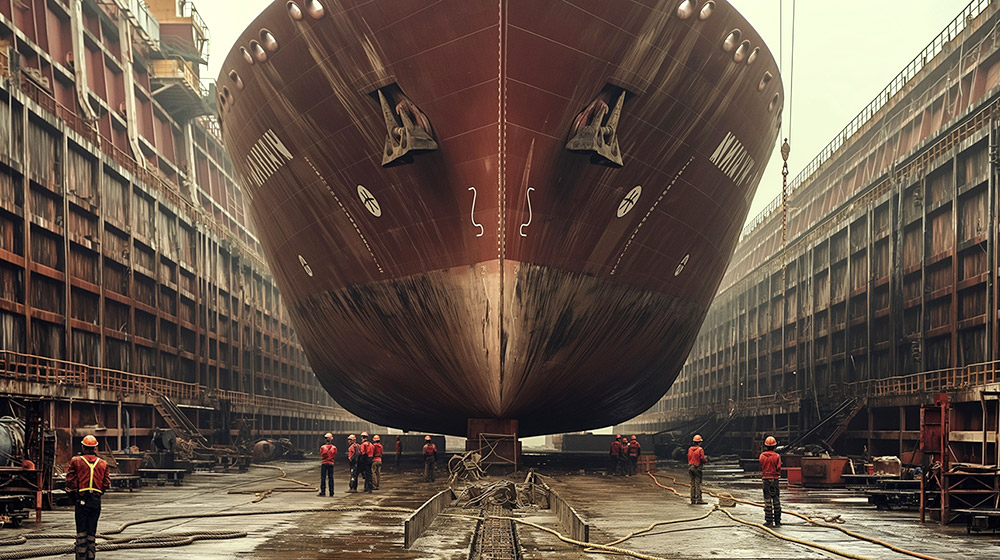One of the pillars of the Trump administration has been a desire to rebuild the shipbuilding and repairing business in the United States. This echoes earlier concerns raised by the U.S. Navy (which must build and repair all its ships in the United States) about the lack and age of the country’s shipbuilding and repair infrastructure.
In response, the White House recently issued an executive order to establish Maritime Prosperity Zones (MPZs) across the United States. The approach is similar to the Federal Opportunity Zone program created under the first Trump administration. According to the order, the MPZs benefits will be outlined by November 2025.
For those unfamiliar with economic development legislation, zone legislation is enabling legislation. It limits tax advantages and other business incentives to well-defined geographic areas, preventing a broad swath of tax shelters. Once defined, targeted incentives can be applied to the zones, creating a concentrated framework for driving specific economic transformation — in this case, new maritime construction, maintenance, repair, overhaul, and conversion (MROC).
Based on conversations with several states, Vista believes the July 8 deadline is a target for the U.S. Commerce Department to define the criteria for what can constitute a zone. States will likely follow with proposals for specific geographies. Designing MPZ boundaries promises to be far more complex than the 2018 effort that shaped Federal Opportunity Zones (OZs). That process aimed simply to direct investment into distressed communities, using low-income census tracts as the primary filter. Even so, the census data used was already dated, and the geography of some tracts — particularly university towns — didn’t always align with state and local development strategies.
Zone legislation works by concentrating incentives in small, well-defined areas.
MPZs, by contrast, must start at ports and reach back through the national maritime supply chain — an infrastructure network that stretches across all 50 states and Puerto Rico. The zones will need to capture inland hubs like Crane Naval Surface Warfare Center in Indiana, as well as heritage contractor facilities and small businesses that support both the U.S. Navy and commercial shipyards. Vista is currently developing AI algorithms to help identify these qualifying geographies and assist states in making their final designations.
For private industry, rebuilding the commercial shipbuilding and MROC sectors presents a high-risk proposition. Success will depend heavily on how the MPZs are drawn and the nature of the incentives offered. By contrast, military-related shipbuilding offers a more stable path. For more than a century, U.S. commerce has relied on naval dominance and the freedom of global maritime movement. Allowing that control to shift to China or Russia would disrupt both American and global trade. As the world grows more unstable, the need for a larger, more active Navy becomes increasingly certain.
50
With that in mind, shipbuilding and MROC firms would be wise to structure new infrastructure investments around military business as a reliable foundation — then gradually layer in commercial capacity over time. This dual-track approach benefits the Navy as well. Military demand fluctuates. Commercial work could help fill production gaps and sustain the skilled workforce needed to scale when military orders surge.
So what should MPZ incentives actually include? The executive order hints at a structure similar to the 2018 OZ program. Those incentives were threefold: First, a qualified investor could place capital in a Qualified Opportunity Fund (QOF) and defer unrelated capital gains for up to a decade. Second, the deferred gains qualified for a 10 to 15 percent tax discount. Finally, after 10 years, QOF owners could sell their businesses without paying federal long-term capital gains. That model worked well for startups seeking equity capital, and for founders hoping to cash out post-growth without triggering tax liabilities. However, it was far less useful for legacy companies that used internal capital and never planned to spin off the QOF entity.
Risk mitigation means anchoring infrastructure around military contracts, not speculative commercial builds.
That kind of incentive structure would fall short in the context of MPZs. Shipbuilding and MROC are capital-intensive sectors led by long-established firms. While there is room for startups — particularly in emerging maritime technologies like sea and subsea drones — the sector needs something closer to the New Markets Tax Credit (NMTC) program.
Ideally, MPZs would offer a salable federal tax credit, modeled after NMTC but without requiring Community Development Entity intermediaries. In this structure, both startups and heritage companies would receive a tax credit in return for infrastructure investments within MPZs. They could use the credit against their own federal tax liability or sell it to other high-liability taxpayers at a discount.
Additional tools could further encourage ship construction and MROC work in U.S. ports. For example, MPZs might include a temporary tariff waiver on cargo shipped by vessels that were built, significantly overhauled, or converted domestically.
Ultimately, MPZs have the potential to revitalize U.S. shipbuilding and MROC for both commercial and military purposes. But the window to influence these zones is closing fast. Once the U.S. Commerce Department and the states finalize boundaries and incentives, companies left outside those lines will face serious disadvantages. If the federal government follows precedent, there will be no opportunity to revise the zones after they’re set.
Now is the time to take action. Make sure your existing operations — and your future plans — fall within potential MPZs.




